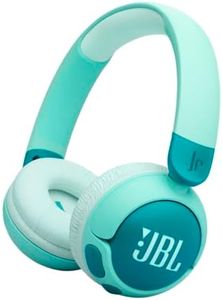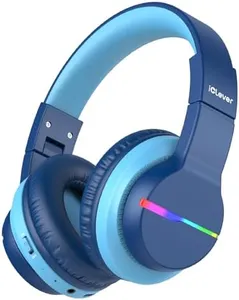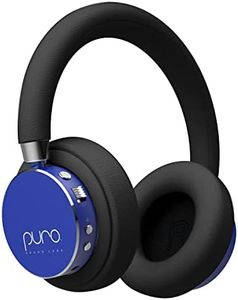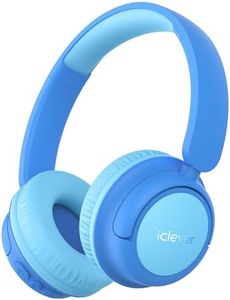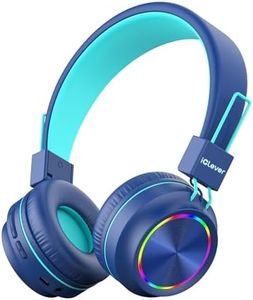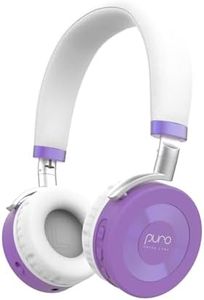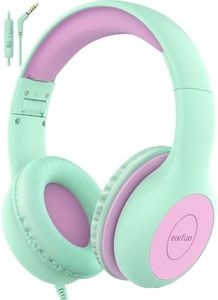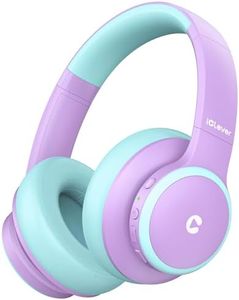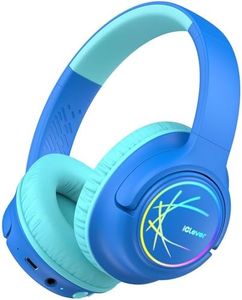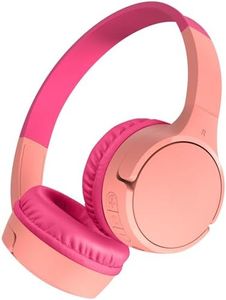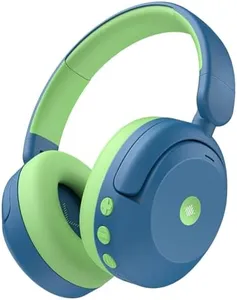We Use CookiesWe use cookies to enhance the security, performance,
functionality and for analytical and promotional activities. By continuing to browse this site you
are agreeing to our privacy policy
10 Best Headphones Kids
From leading brands and best sellers available on the web.Buying Guide for the Best Headphones Kids
Choosing headphones for kids is a thoughtful process that goes beyond just picking a colorful design. It's important to consider features that ensure safety, comfort, and durability, all while making sure the sound quality is enjoyable and the fit is suitable for smaller heads. Kids’ headphones should also withstand rough use and offer user-friendly controls so children can handle them independently. Identifying your child's main use—whether for school, travel, or fun—will help you focus on the specs that matter most.Volume LimitingVolume limiting is a safety feature that restricts how loud headphones can get, usually capping the sound at 85 decibels to protect young ears from hearing damage. When choosing volume-limited headphones, make sure the limiter cannot be easily bypassed. Headphones without such protection can risk your child's hearing health, especially if used for long periods or close to noisy environments. This feature is crucial for all kids but especially for younger ones, so always look for clear labeling about safe listening levels.
Fit and ComfortFit and comfort mean how well the headphones sit on a child’s head and ears. Kids’ heads are smaller so adult-sized headphones may be loose or slip off easily, causing discomfort or annoyance. Look for adjustable headbands and cushioned ear pads. Smaller, lighter headphones are generally better for young children, while older kids may prefer a more grown-up style with extra padding. Trying a pair on if possible, or checking age and size recommendations, helps ensure comfort for longer listening sessions.
DurabilityDurability refers to how well the headphones can withstand drops, twists, and general rough handling common with children. Kids’ headphones are often built with flexible materials, reinforced cables, and tangle-resistant cords or wireless designs to avoid breakage. Sturdier headphones might look chunkier but will last longer through accidental drops or being stuffed in school bags. For very young or active children, prioritize robust build quality.
Wired vs. WirelessWired headphones connect directly to devices using a cable, while wireless headphones use Bluetooth to connect without cords. Wired versions never need recharging and are simple to use, but cables can be a tripping or tangling hazard. Wireless headphones give freedom of movement and fewer tangles, though they require charging and sometimes have slightly complex pairing steps. If your child will use headphones at a desk or in the car, wired may be fine. For active kids or use during travel, wireless could be more practical. Choose based on the child’s typical environment and your preference for simplicity or flexibility.
Size and PortabilitySize and portability determine how easy it is for a child to handle, carry, or store their headphones. Smaller, foldable headphones are easier for kids to pack in their backpacks for school or travel. Overly large headphones may be unwieldy for small children. If your child will mostly use the headphones at home, size might not be as important, but for outings or switching locations, lightweight and foldable models are more convenient.
Microphone and ControlsHaving a built-in microphone and simple control buttons helps kids use headphones for interactive learning, online classes, or calls with friends and family. Some headphones have volume and playback controls right on the ear cup or cable, so children can adjust settings themselves. For kids who will use headphones for schoolwork or video chats, a clear microphone and easy-to-use controls are helpful. For those mostly listening to music or watching videos, these features may be less critical.
Sound QualitySound quality refers to how clearly and richly the headphones play music, voices, or effects. While children may not be looking for top-tier audio, clear and balanced sound with no harshness makes listening more pleasant and can help with understanding spoken content in learning apps or lessons. Headphones for kids generally have a softer sound emphasis to ensure safety, but a good pair should still sound clean and enjoyable. Younger children may not notice differences in sound quality as much as tweens or teens.
